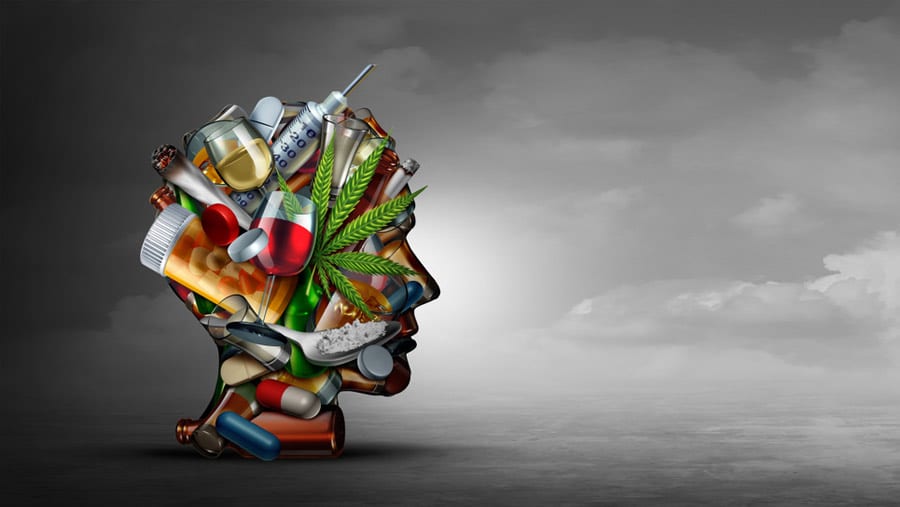What is Polydrug/Polysubstance use?
Polydrug use, also known as polysubstance use, is a term for using more than one drug at the same time or one after another within a certain period of time. These drugs can include both legally prescribed and illicit drugs. This includes mixing depressant substances, mixing stimulant drugs, mixing stimulants with depressants and mixing multiple prescription medications. Any combination of substances used together or one after another leads to a high risk of developing a strong dependence to the drugs leading to a concurrent substance use disorder and addiction.

Many individuals who seek help from a substance abuse rehab program often enter into the facilities with a polysubstance addiction. Mixing substances can have greater risks of serious side effects, overdose or death. According to the CDC, in 2019, about 50% of drug overdose deaths involved the usage of multiple drugs.
Mixing drugs is not uncommon. According to research from the National Survey on Drug Use and Health, those with prescription opioid use disorders are more likely to struggle with polysubstance abuse. Alcohol and marijuana are also substances that are commonly mixed with other drugs. There are many reasons why individuals mix drugs. Sometimes it’s used to create enhanced desired effects. In other cases, mixing multiple substances is a way to create a substitute or drug alternative to another drug. In many cases, multiple drug usage is due to individuals trying to reduce their dependence on one drug by using another. Polydrug use ultimately becomes a dangerous cycle of consuming more mind-altering and harmful substances.
Check Your Insurance Coverage for FREE
Find out if your insurance covers addiction treatment in minutes. We accept most insurance!
A multitude of risk factors exists when it comes to polysubstance use. Some examples include Institutional discrimination resulting in the inequality of access to basic health care, mental health illnesses and behavioral issues, family and social relationships and environment, and the current state of a drug or alcohol addiction that already exists.
It’s difficult to predict the effects one drug can have on a person’s physical and psychological well-being. But when two or more drugs are added to the cycle, it becomes even more unpredictable and more dangerous. The interactions between two different substances consumed either together or close together significantly increase the toxicity and harmful effects such as stroke, heart attack, brain damage, organ failure, depression, anxiety, hallucinations and rapid or slow heart rate.
Reach out to Hotel California by the Sea
We specialize in treating addiction and other co-occurring disorders, such as PTSD. Our Admissions specialists are available to walk you through the best options for treating your addiction.
Polydrug use can manifest in a few different forms of substance mixing. Intentional polysubstance use refers to when a person intentionally uses substances to increase or decrease the effects of another drug or wants to experience the effects of the combination of substances together. An example of this would be in a nightlife or other type of recreational setting in which the prevalence of alcohol usage along with other “club drugs” are commonly used. Unintentional polysubstance use is when a person uses drugs that have been mixed or “cut” with other mind-altering substances without their knowledge. An example of this would be if an individual were using methamphetamine laced with fentanyl. This common practice is used to amplify the effects of the drug or to possibly mask the side effects of another drug that has been “mixed” in.
Polydrug usage and the mixing of substances can lead to a serious addiction in which professional help is required. Hotel California by the Sea offers a substance abuse and prescription medication abuse rehab program focusing on helping clients heal from substance use disorders including polydrug abuse. Through multiple levels of care which includes inpatient and outpatient programming, along with specialized therapies to address the emotional well-being of the clients, anyone suffering from multiple drug addictions can get clean.
References:
https://adf.org.au/reducing-risk/polydrug-use/
https://www.emcdda.europa.eu/publications/mini-guides/polydrug-use-health-and-social-responses_en
https://www.cdc.gov/stop-overdose/caring/polysubstance-use.html?CDC_AAref_Val
